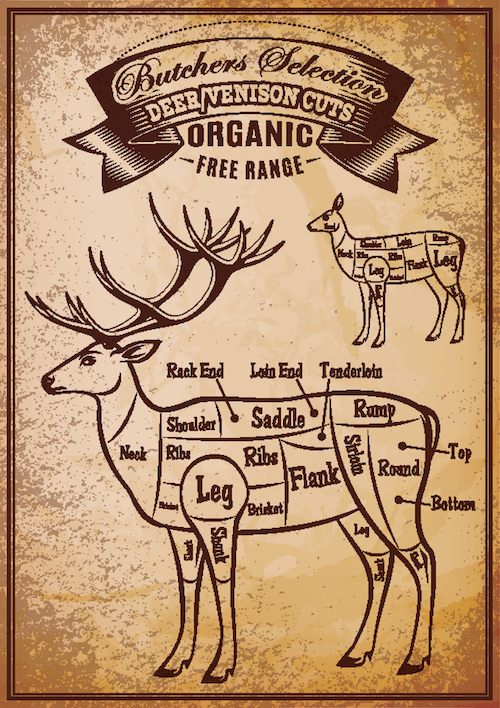In centuries past, when deer hides and venison were common items of trade, those doing the trading knew quite well the value of a deer or part thereof. In 1718, for example, every frontiersman knew one tanned deerskin could be traded for one pound of black powder, 40 bullets or 20 flints. A rifle could be obtained for 25 deerskins, a pistol for 12, an ax for four, a coat for 12 and a blanket for six.
Using the word “buck” as a synonym for “dollar” originated from these trading practices. Each skin originally was referred to as a buckskin, which later was shortened to just buck as in “A pound of black powder will cost you one buck.”
Venison also served as an important exchange medium. Prices ranged from a halfpenny per pound in 1831 up to about 30 cents per pound in the late 1870s. By the turn of the century, however, as citizens became less dependent on wild-animal foods, venison prices had fallen to 8 to 15 cents per pound.
Modern Deer Value
Today you’d get some funny looks if you threw 25 tanned deer hides on the counter at the gun shop and asked for a rifle in return. And if you try selling wild venison, you’re in violation of the law. Nevertheless, we still find reasons to ask now and then, “what is the dollar value of a deer?”
When studying economic losses resulting from deer/vehicle crashes, economists can’t compute bottom-line losses without first knowing the estimated value of each deer thus killed. So someone in this group did all kinds of arithmetic and came up with $1,250. That is, one deer is worth approximately $1,250.
Related: Should You Be Allowed to Sell Venison?
Other researchers disagree. They say the dollar value of a deer is twice this amount, even if the total is based on hunting expenditures alone.
Depending on who you want to believe, one deer has a dollar value somewhere between $1,250 and $2,500.
That’s a big spread. So last season I figured I’d do some economic research myself.
My first computations were based on reasonable expenses incurred by the three hunters (my two sons and me) while pursuing whitetails on a two-day hunt.
Those expenses were:
 Three refuge hunting permits: $60
Three refuge hunting permits: $60
Motel room for two nights: $100
Meals for two days: $115.70
Travel expenses: $93.15
Ammunition: $1.30 (for the one and only one round fired this trip)
This totals $370.15. Our hunting trip produced one doe deer killed by my son Matt. This deer weighed 91 pounds on the hoof, costing us $4.06 a pound. Had my other son Zach and I killed a deer, too (neither of us saw one that was legal), the cost per pound would have been considerably lower. Had the three of us traveled to Alberta, Canada, to hunt, the cost per pound would have risen exponentially.
Can these cost-per-pound figures help you calculate the value of a deer? Of course not. I present them here just to show you how foolish it really is to try and come up with an accurate figure that shows the true economic value of a deer.
In the end, a deer’s economic value is pretty meaningless to most of us anyway. Dollars and cents have nothing to do with the reasons we value deer and other wildlife so highly.
Related: I Hunt Because …
Featured Photo: Hcark at 24HourCampFire.com


